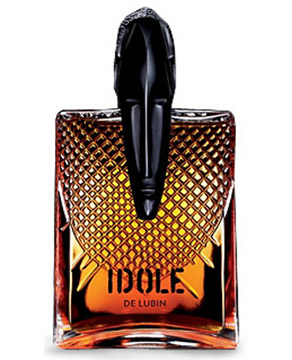Welcome to the year in review, a look back at both the best new releases of 2017 and the noteworthy releases from prior years which I tried this year and enjoyed. Before I start, though, let me say first that I’m operating at a bit of a handicap because I took a long sabbatical for the first half of 2017. I spent the next six months after my return trying to catch up on, test, or review all the new fragrances that I had missed during my break as well as the ones released subsequently, but I’m sure I’ve missed a few great ones along the way. It’s not easy to put a dent in the tsunami of 2,300+ fragrances which are released each year even when one is reviewing nonstop, never mind when one takes a break from modern perfumery. Even so, I found a number of fragrances that either I loved immensely, that I thought were good representations of their genre, or that I thought were original and executed extremely well.
Category Archives: Lubin
Lubin, Amouage, Roja Dove & Byredo
Today, we’ll look at a four releases from Lubin, Amouage, Roja Dove, and Byredo: Epidor, Bracken Woman, Tuberose, and Velvet Haze. They’ll be briefer takes than normal; I’m behind on covering recent niche fragrances after my long absence and I’m afraid I’ll never catch up if I write one of my typical reviews for each scent. Plus, the only way someone as verbose as myself can manage to write short descriptions is if I stick to the most impressionist overview possible, and skip the usual detailed breakdown in development, sharing other people’s perspectives, or arduously looking up retail links around the world. I’ll try to provide a few relevant details or links at the end, should you wish to pursue the scent further, but not many. So, let’s get to it.
Lubin Upper Ten
The newest fragrance from Lubin, Upper Ten, was inspired by a very old historical event, the immigration influx into America of the 1800s, resulting in the 10,000 “who mattered” and who “laid the groundwork for US supremacy.” I read that last part and thought to myself, “Oh dear, that might ruffle a few feathers.” But at least that backstory is somewhat interesting, which is more than I can say for the fragrance itself.
Perfume Review – Lubin Idole (Eau de Toilette): Take Me To The Jungle
Set the jungle on fire!
Set it ablaze “with a woody liqueur rich in scorching spices, as sweet as sugar cane, and as warm as leather.” That was the express goal of famous perfumer, Olivia Giacobetti, in creating Idole, the much-loved fragrance from the ancient French perfume house of Lubin. Idole is a reinvention of a 1962 Lubin fragrance, and is supposedly their 466th creation! It would sound like a complete lie from anyone else but Lubin, a perfume house whose storied history utterly fascinates me.
Lubin was founded in 1798 by Pierre François Lubin, soon after the French Revolution. He had apprenticed under the perfumer who served Marie-Antoinette but this was a new political climate. Lubin soon won favour with Napoleon’s Imperial court and his scents were beloved by both Empress Josephine and Napoleon’s influential sister, Pauline. The royal courts of Europe soon followed suit, from the King of England to the Tsar of Russia. Once Napoleon fell, the seemingly wily, pragmatic Lubin managed to curry favour with the new royal dynasty by dedicating his fragrances to the Bourbon queen, Marie-Amélie. A very ambitious man, Lubin seemed to need more worlds to conquer and, in 1830, became the first perfume-maker to conquer the New World with perfumes that reached the banks of the Mississippi. I have no idea if that last part of biographical past was embellished a little bit but, frankly, I don’t care one whit. For a history fanatic like myself, it is all utterly fascinating.
Idole was released in 2005 as an eau de toilette. In 2012, Lubin issued an Eau de Parfum version which I’ve read is largely similar to the Eau de Toilette with only minor differences and considerably greater depth. This review is only for the Eau de Toilette version. The Lubin press release (as quoted by Libertine Perfumes) describes the fragrance as follows:
Inspired by the ancient maritime spice routes, from Madagascar and Zanzibar in East Africa to Java in the Spice Islands of Indonesia, Idole is a seductive fragrance that never overwhelms. Rum and exotic spices mingle with dark, smoky woods and leather, creating a warm and seductive fragrance.
Serge Mansau designed the stunning bottle to much international acclaim with the inspiration being the sail of the traditional wooden boat known as a felucca, and features a carved African mask on the cap — a true collector’s item[.]
If you ever have time to spare, I urge you to check the Lubin website for their gorgeous graphics, music and the detailed story associated with Idole, which is as well done for Idole as it is for all their scents. As for the bottle, it is truly spectacular. One of the most eye-catching and unusual I’ve seen.
The notes in Idole include:
rum absolute, saffron, bitter orange peel, black cumin, Doum palm, smoked ebony, sugar cane, leather and red sandalwood.
As a side note, “black cumin” is another name for Nigella Sativa and seems to be quite unrelated to the type of cumin that is used in Indian curries. According to Wikipedia, Nigella Sativa is sometimes alternatively called “Fennel Flower,” “Nutmeg Flower,” or “Roman Coriander.” Its Turkish name — “çörek otu” — literally means “bun’s herb” from its use in flavouring the çörek buns. With a sweet, bitter taste, it is frequently used in Middle Eastern pastries or in liqueurs.

Sunset at Lake Kariba, Zimbabwe. Photo by: de Paula FJ via Flickr: http://www.flickr.com/photos/fjota/2573634501/
Idole EDT opens on my skin with a strong note of actual, pure rum infused with sugar cane and followed immediately thereafter by loads of saffron. The latter is spicy, nutty, and sweet, but nothing like the dessert-like saffron used by Giacobetti in her famous Safran Troublant for L’Artisan Parfumeur. Idole’s top notes blend together to create a beautiful sum-total which is then joined by touches of bitter orange peel and a smoky, creamy, smooth wood note. I was extremely taken aback by just how airy the perfume is, given the richness of all those accords.
Within a few minutes, the perfume starts to shift. The saffron becomes less obvious as an individually distinct note, receding to the background to lend its indirect effect to the perfume’s rum, sugar cane notes. A very smoky, woody element that I assume is the Doum Palm muscles its way to the top. On its footsteps is a hint of some dry, dark, minutely bittered spice with an anise-like undertone which I assume is the “black cumin.” Flickering touches of something leathery dance at the periphery. The combination of elements swirls together to create a very spiced, rummy, woody, ambered feel. It is soft, almost gauzy on my skin, especially as compared to similarly boozy ambers with spice, but, despite that airy, lightweight feel, the notes seem rich, smooth and very warm. At least in the beginning….
Thirty minutes in, Idole’s woody notes become very prominent. I’ve never smelled “Doum Palm,” but anyone who has been to the tropics knows the smell of palm trees with their almost vegetal, very beige, warmly woody aroma. Here, there is something darker lurking underneath, adding an almost smoky edge to the note. It’s probably the ebony. In his admiring Four Star review of Idole in Perfumes: The A-Z Guide, the famed perfume critic, Luca Turin, wrote that the perfume had “an eerie driftwood gray note at its center,” and I think that’s as good a way as any to describe the unusual smelling note. Alongside, there is a sugar cane-infused leather accord that feels wonderfully brown and rich. Saffron lurks in the background, adding a delicate touch of nuttiness to the underlying elements but it’s never strongly pronounced. To be honest, I would have preferred much more of it, along with the bitter peel orange accord which seems to have largely vanished from sight.
Idole remains that way for the rest of its duration on my skin — spiced rum and sugar cane with strongly woody notes that are smoked and supported by tinges of leather. It doesn’t fundamentally morph in any way, though the leather nuances recede about 90 minutes in and the darker, smoky wood accord becomes somewhat stronger. The smoke is perhaps one of my favorite parts, and its light tendrils embrace the wood in a truly lovely way. The flickering touches of the anise-like black cumin are also very pretty, though the note is even more muted after an hour than it was initially. In its final moments, Idole is primarily a musky, abstract rum with hints of woodiness and a sprinkling of sugar cane. All in all, it lasted 6.75 hours on my perfume-consuming skin, always feeling incredibly light and airy. The sillage wasn’t bad, but Idole isn’t a scent with enormous projection. Like everything else about the scent, it is moderate.
I liked Idole, but I have to admit, I was surprised it wasn’t more complex or nuanced. After all that I had heard about it, I had thought it would be darker, smokier, heavier. I had thought the jungle would be on FIRE; and it wasn’t, except for a few, itsy bitsy logs. (It didn’t help that Giacobetti’s quote kept making the refrains of the old 1980s song — “The roof! The roof! The roof is on Fire! Let the *___* burn” — ring out continuously in my head.) Also, for my personal tastes, Idole was far too soft and sheer. It seems to be Giacobetti’s signature to make heavy elements feel positively airy, but I really had expected far more, something that would take me to the heart of darkness, to reference the famous Joseph Conrad book, and to full sense of an African-like Apocalypse Now.
That said, I think Idole EDT would be a perfect choice for those who don’t want to give up their Orientals during the hot, sticky summer months. It is quite a versatile ambery Oriental, given its moderation on all fronts. Plus, its dry notes make it suitable for those who don’t like their boozy scents to verge on the gourmand. I also think Idole is highly unisex. Judging by what appeared on my skin, I don’t think it’s masculine at all. On Fragrantica, a number of people disagree, but I think it’s a highly subjective matter that all depends on your personal tastes. If you like clean, fresh, fruity, floral or dessert scents, then Yes, Idole may seem masculine with its smoked woody notes and leather nuances. If you’re used to Orientals, then, No.
As a whole, Idole is a much-loved fragrance. Though there is a firm split on the issue of sillage and longevity, most people on Fragrantica either admire or flat-out adore the fragrance itself. Perhaps the most useful review comes from The Non-Blonde who, like me, wanted to love Idole EDT, but who struggled with its development on her skin and with its overall lack of depth. She ended up being blown away instead by the new Idole Eau de Parfum which is clearly something I have to seek out post-haste:
I first met (the modern) Idole de Lubin shortly after it came out in 2005. It was stunning. Completely and utterly breathtaking with its boozy opening and intense dark spicy heart. I loved it and tried for a long time to make it work, but there was a hollowness halfway through Idole EDT that make it fade and die on my skin much too quickly. It was like a great romance that didn’t survive the hardships of reality, but made me wistful whenever I looked back.
Six years later we meet again. Idole EDP is a changed perfume. Stronger, fuller and more reliable. I smell less cumin and more leather, the rum is sweeter and the incense smokier. It’s all I ever wanted Idole to be, and here it is- more brooding, taller but familiar. I want to bury my face in its warmth, wrap it over my shoulder and breath the dark woody aroma.
In asking her to create Idole EDP, Lubin allowed perfumer Olivia Giacobetti to make things right, to let Idole become what it was meant to be. It’s one of the best incense perfumes around, romantic and mysterious. On Luckyscent’s masculine-feminine spectrum they placed it slightly to the manly side and I agree, sort of. The rum-cumin-smokes wood ensures that Idole will appeal to men and smell magnificent on them, but women who have a thing for the dark side and wear perfumes such as Black Cashmere, Safran Troublant, Passage d’Enfer or Tea For Two will find a lot to love in it (the last three are also by Giacobetti).
Out of all the big bloggers out there, I find the Non-Blonde is the one whose views and experiences are always the closest to my own. We rarely seem to diverge in any serious respect. In contrast, I almost always differ widely in opinion, skin experiences, and detected notes from Bois de Jasmin — to the point that I often wonder if we’re smelling the same fragrance. I bring that up only because Bois de Jasmin swooned for Idole Eau de Toilette, writing about it as if it were one of the darkest, smokiest, most richly spiced, heavy fragrances she’d smelled in a while:
The warmth of spices is layered over the vibrant richness of woods, making Idole de Lubin one of the most voluptuous and darkest fragrances composed by Olivia Giacobetti. It does not evoke the images of transparency and hazy glow. Instead, the fragrance burns with the passionate intensity of sweet spices. A hot flame of clove accented by pepper slowly spills into the heart of the composition where it dies down in the smooth folds of orange sweetened leather. The base is filled with the caramel redolent vapors of rum, their warmth imbuing the darkness of woods with appealing sweetness. Against the backdrop of dark rosy sandalwood, a whisper of incense smoke lends an ethereal touch.
While the composition does not have a soft translucence characteristic of Olivia Giacobetti’s creations, her take on an oriental theme is interesting in terms of its ability to give airiness to the dark and heavy wood notes and to maintain outstanding tenacity. Like gold embroidery on silk, Idole de Lubin is a beautiful compromise between opulent richness and refined softness.
Obviously, perceptions of darkness, spice, and orientalism are a very relative thing. I do think that Idole is a pretty fragrance, but I didn’t find it even a tenth as complex, nuanced or “voluptuous” as what she experienced. (And I certainly didn’t detect any cloves or sandalwood.) Instead, I agree with The Non-Blonde’s impressions of ultimate hollowness, general softness, and insufficient depth or body. Even Now Smell This felt the same way, writing:
Olivia Giacobetti… fragrances make a virtue of simplicity and rarely raise their voice above a whisper, and Idole is no exception. It starts with peppery spices in a cloud of rum; the orange peel and saffron shine through beautifully as the alcohol burns off. The spice notes linger on into the dry down, lending an exotic touch to the smoky charred woods and leather. After an hour or so, it is rather mild and soft, just a whisper of leather and woods, no more than lightly sweet, with a subtle, close to the skin presence.
Clearly, whether it’s on Fragrantica or between bloggers, there is a huge split on the issue of Idole’s richness. Since perfume is so subjective — especially in areas pertaining to richness, heaviness, spiciness, and depth — then, if you’re tempted by the fragrance, I would strongly recommend that you try both the Eau de Toilette and the fuller, seemingly more complex Eau de Parfum version before buying. Or, if you know you prefer heavier, richer perfumes, just opt right away for a sniff of the Eau de Parfum instead. The prices for both are excellent, especially given the size of the bottles and the fact that such enormously loved niche perfumes (in stunningly gorgeous, unusual bottles) are rarely so reasonable: the EDT comes in a 2.5 oz/75 ml bottle that retails for $120 or €95, while the Eau de Parfum comes in a large 3.4 oz/100 ml bottle that costs $160 or €120. The relatively low cost of the fragrance, especially in Eau de Toilette form, may be one reason why many of the retailers that I have linked to below list the Eau de Toilette as one of their best sellers. In fact, it is completely sold out on Luckyscent at the moment.
Whichever version you opt for, I think Oriental lovers should definitely try Idole. If you’re lucky, it will take you to the heart of Africa and set the jungle on FIRE!












